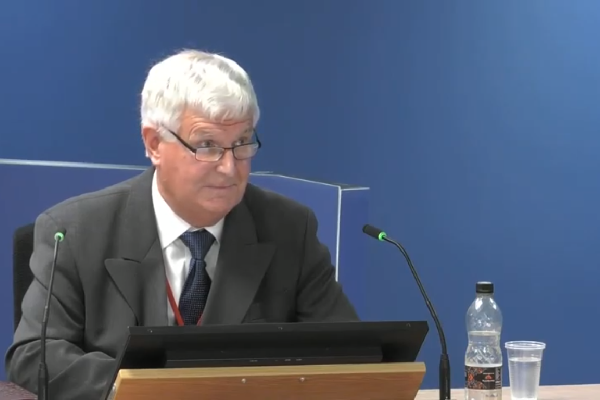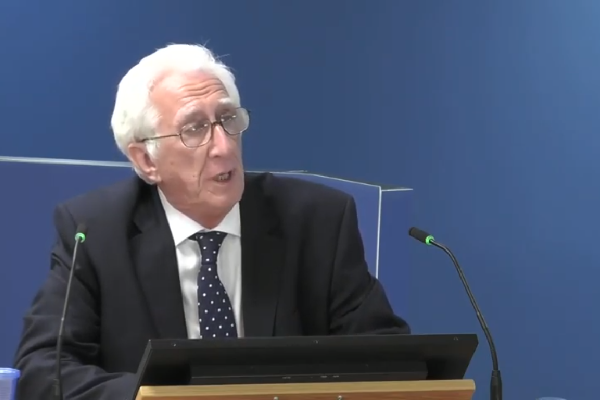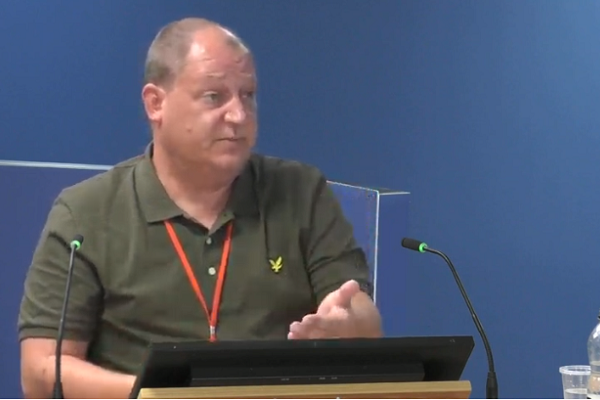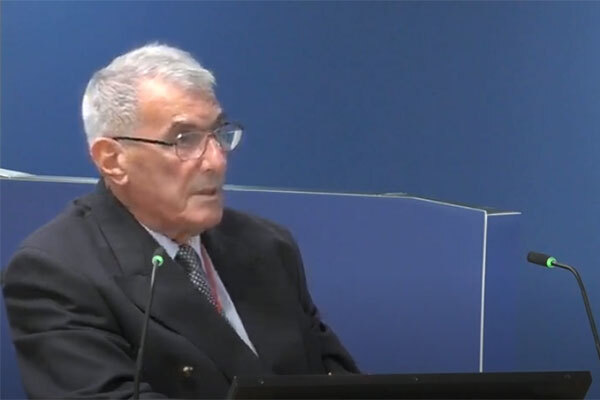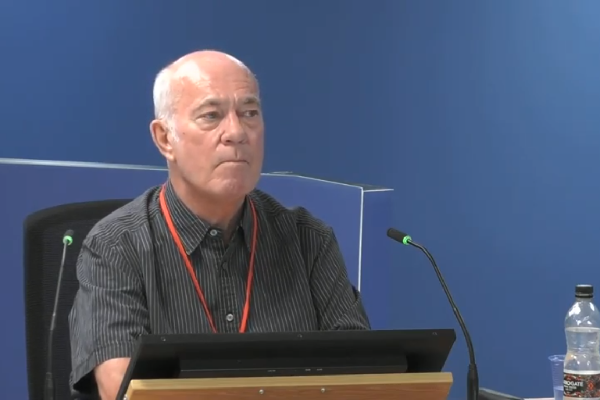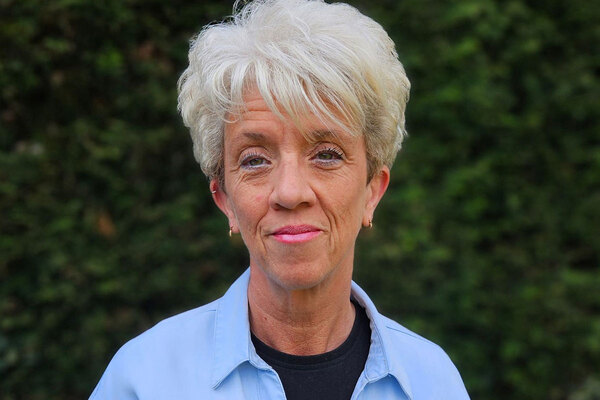You are viewing 1 of your 1 free articles
‘Most likely’ reason Grenfell lift control switch did not work was wrong sized key, says expert
The “most likely” reason firefighters were unable to bring the lifts in Grenfell Tower under their control on the night of the fire was the use of an incorrectly-sized key, an expert witness has told the inquiry.
Explaining his views, which are being challenged by lawyers acting for the Fire Brigades Union (FBU), Roger Howkins explained that a key investigated after the fire by police was “grossly ill-fitting”.
However, he said he could not conclude with certainty that this was the key that firefighters attempted to use on the night, nor could he offer a definitive conclusion about why the ‘fire control switch’ on the tower’s lifts did not work.
The inquiry has previously heard that when one of the first firefighters to attend the blaze attempted to take control of the lifts by inserting a key into a switch on the ground floor, it did not work. He said he felt the key “hit some kind of stop” and “felt like it wasn’t connecting to the mechanism”.
The mechanism would have returned the lifts to the ground floor and been placed under manual control of firefighters, but instead it remained in service for residents. Three people are believed to have died after the lift they were travelling in stopped suddenly on the 10th floor and filled with smoke.
Giving evidence today, Mr Howkins presented three potential reasons why the switch may have been inoperable:
- The use of a key of ‘incorrect dimensions’
- The switch being faulty
- The impact of the fire on the lifts
In his report he did not reach a conclusion as to which explanation was correct, and the matter will ultimately be decided by inquiry chair Sir Martin Moore-Bick and his two panellists.
However, asked today which he believed to be the “most likely”, Mr Howkins said: “I still say that possibility one [the use of an incorrect key] is the most likely cause.”
He noted in his report that the attempt to activate the switch occurred relatively early in the fire and before the blaze had spread extensively, with forensic investigations afterwards identifying no fire damage to the switch mechanism.
He also pointed to the witness evidence of engineers who claim to have tested the switch around a month before the fire and found it worked. However, these tests were not documented and the FBU has called the witnesses saying they were carried out “unreliably”.
Experts have analysed a key sent to the police by a firefighter, who removed it from the control switch in the tower. However, this firefighter has said he cannot be certain that the key he sent to the police is the same as the one he removed from the tower.
The key he sent was found to be “very significantly different in its dimensions” to another standard key sent in for testing by the London Fire Brigade and was “grossly ill-fitting” for the switch at Grenfell Tower.
Various tests on the switch following the fire showed that it was deformed and contaminated with builders’ debris.
However, Mr Howkins said if a correctly sized key was used, the builders’ debris would not have prevented the switch from operating.
Further testing by the University of Northampton suggested that the deformation may have been caused by the use of excessive force and an ill-fitting key.
The FBU has challenged this view, saying that the switch was “caked in builders’ dust and debris” and was only operable once it had been “removed and cleaned”.
The switch at Grenfell Tower used a ‘drop key’ rather than a more standard triangular ‘Euro key’.
Mr Howkins said that Butler & Young Lift Consultants should have informed Kensington and Chelsea Tenant Management Organisation (KCTMO) that this more standard key was required.
Previous witnesses have told the inquiry that this more standard key was not used because of the risk of use by “unauthorised persons” who may be able to obtain skeleton versions online.
“I don’t accept that,” said Mr Howkins. “The Euro key has been used European-wide for many years. There’s thousands, probably tens of thousands of lifts with that type of key. And it’s a safer key because it’s got specific dimensions.”
Mr Howkins was also asked about the failure to upgrade the lifts at Grenfell Tower to ‘firefighting’ standards in a modernisation programme in 2004. Instead, the lifts were upgraded to the lower standard of ‘fireman’s lifts’.
He said Butler & Young Lift Consultants’ advice to KCTMO during this project was “deficient in a number of respects”, because it did not advise on how to reach firefighting standards “unless it was not reasonably practicable”.
Witnesses from the consultancy have claimed they were specifically told by KCTMO that they did not want ‘firefighting lifts’, which is why they did not suggest them.
But Mr Howkins said this did not change his view. “I think the safety of the firefighters and the safety standard takes precedence over client’s instruction,” he said. “It’s a safety feature to help firefighters fight a fire in a high-rise building.”
He said he would have expected the consultants to have documented this requirement from KCTMO, if it was made.
Butler & Young Lift Consultants is a distinct company from other Butler & Young firms operating in the construction sector.
Expert Colin Todd was due to give evidence on fire risk assessments carried out on the tower today, but his evidence was delayed with Sir Martin citing ‘medical reasons’. As a result, the inquiry will be adjourned until Monday.
The inquiry continues.
Sign up for our weekly Grenfell Inquiry newsletter
Each week we send out a newsletter rounding up the key news from the Grenfell Inquiry, along with the headlines from the week
Already have an account? Click here to manage your newsletters
